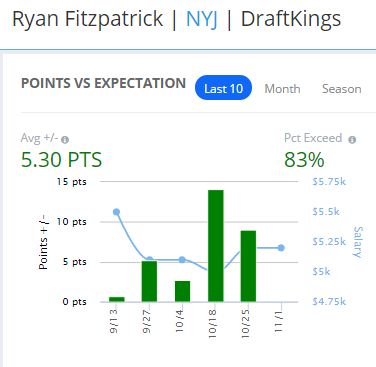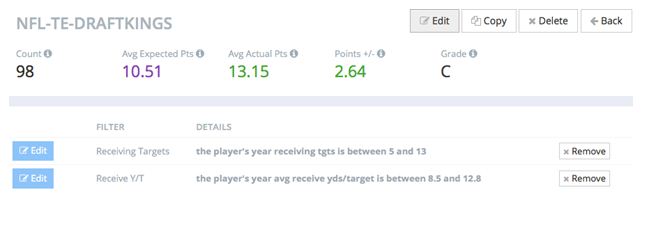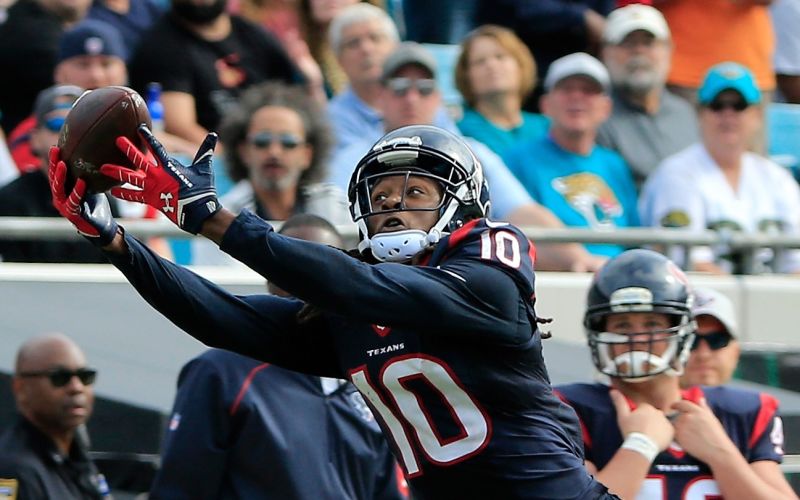I’m supposed to be studying for an exam right now. Yet, here we are.
My test is in a class called ‘Employee Benefits’ and if the name of the course doesn’t sound boring enough, I have to “know” the difference between qualified pension plans and deferred pension plans. It’s a great time.
This has me thinking, though. How long does the average college student spend studying per week? Well, per a 2014 study conducted by the National Survey of Student Engagement, the average student spends about 17 hours each week preparing for classes. Imagine my reaction when I read this.
Now, this is not to say I am a bad student – but I spend roughly 15-20 hours a week researching miscellaneous fantasy football nuggets, which coincides with writing miscellaneous things, just like this article. But, this led me to another question: when we’re researching fantasy data, what actually matters? We all are subject to endless analysis; ex-Steelers head coach Bill Cowher was giving FanDuel advice in a pre-game show a few weeks ago for crying out loud.
What I’m getting at is this: whether you have a 9-to-5 job or you’re a student like me, your time is precious. Take a moment every week to separate the “noise” in analysis and instead use descriptive and predictive data that can actually help you in both the short- and long-run. You don’t have to read everything. Find what matters, refine your process weekly, and do what works best for you. I’ve found that I do my best research when I’m supposed to be studying for an exam…
Let’s get to this week’s trends.
- Ryan Fitzpatrick’s Beard Is Consistently Beating Expectation

I realize rostering Ryan Fitzpatrick isn’t the most comforting feeling, but he’s consistently beaten his implied salary-based points each week so far. That’s a trend we love to see when a quarterback is priced at $5,200 on a given week. Fitzpatrick gets to face an Oakland secondary that is giving up the most passing yards per-game to opposing signal-callers (312.83) and is allowing the 12th highest completion percentage (65.5%).
Plus, Oakland has allowed an absolute barrage of solid fantasy finishes. Here is what the Raiders have allowed in terms of weekly overall rankings against them: QB9 (Andy Dalton), QB11 (Joe Flacco), QB9 (Josh McCown), QB12 (Jay Cutler), QB26 (Peyton Manning), and QB4 (Phillip Rivers). There aren’t many “ceiling” explosion games of the bunch, but that’s fine because Oakland is allowing such a nice floor of passing stats to make Fitzpatrick’s $5,200 price tag on DraftKings palatable. For what it’s worth, Fitz is the 16th highest priced quarterback on FanDuel ($7,400).
- Wide Receivers That Are Heavily Targeted and Have Seen Monthly Salary Increases of $1200 or More

The only reason for this trend is DeAndre Hopkins. He’s seeing an unbelievable 14.4 targets per-game and is now appropriately priced on DraftKings ($8,700). His salary just one month ago was $7,200. Simply, I just wanted to know if Hopkins price jump would actually increase his overall projection and I think it’s safe to say that it does.
Plus, this week, Hopkins is in an excellent spot against a Titans’ secondary that has over-achieved to-date. If you want to bank on some regression here: Tennessee is allowing the fourth most yards per reception (14.84) and the sixth most fantasy points per reception (3.12) to wide receivers but are somehow 25th in average fantasy points per-game allowed at the position.
- Drown Out The “Noise”: Tight Ends and Significance of Yards per Target

Like I mentioned at the top, we’re always looking for meaningful data to aid decision-making. Statistics are a great ally, but we need to understand what they actually mean and whether or not they are actually significant. I’m personally a huge fan of yards per target, especially with tight ends. So, this trend has us looking at tight ends that see at least five targets per-game and average above 8.5 yards per target. The average yards per target among tight ends this year is 7.1.
So, the tight ends currently averaging at or above 8.5 yards per target: Travis Kelce (10.5 yards/target), Rob Gronkowski (9.9), Gary Barnidge (8.6), Greg Olsen and Tyler Eifert (8.5). I don’t think it’s just “noise” that all five of those tight ends are in the top-8 in PPR points per-game at the position.

